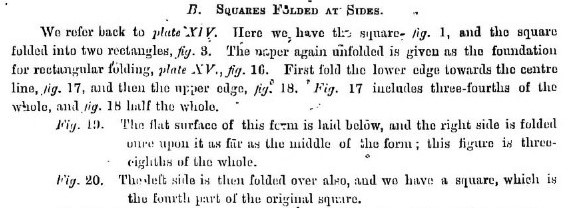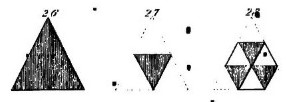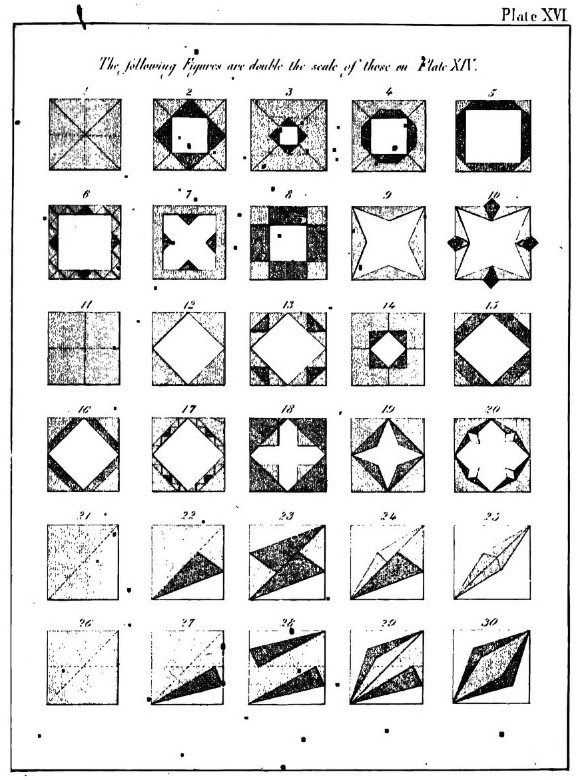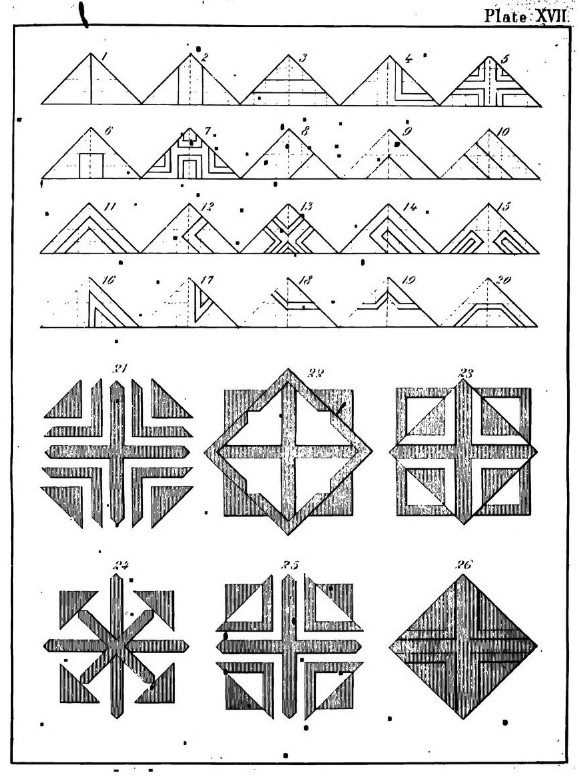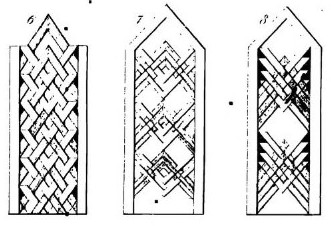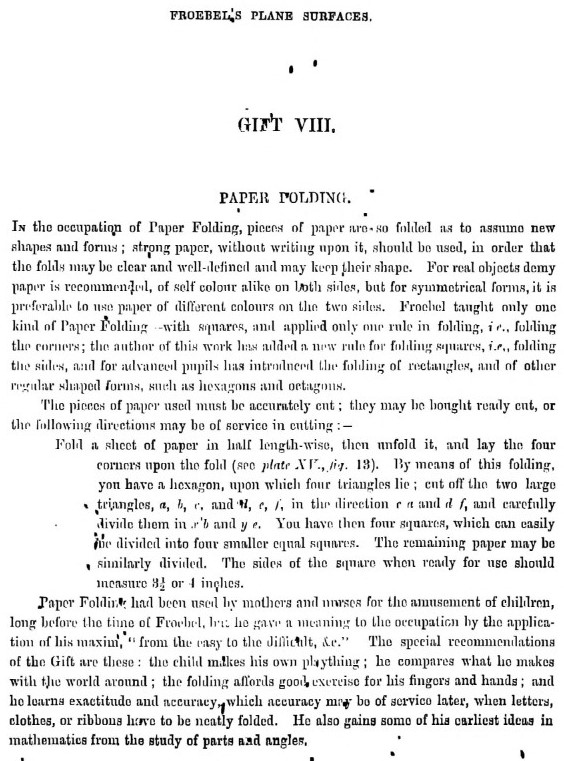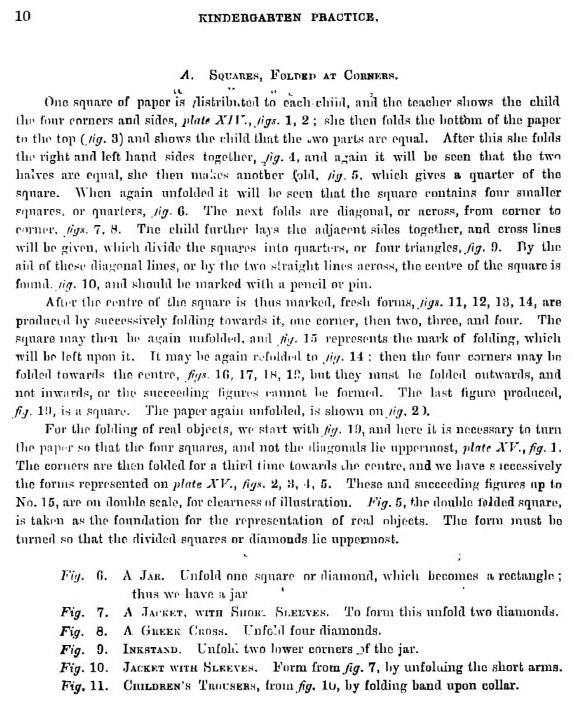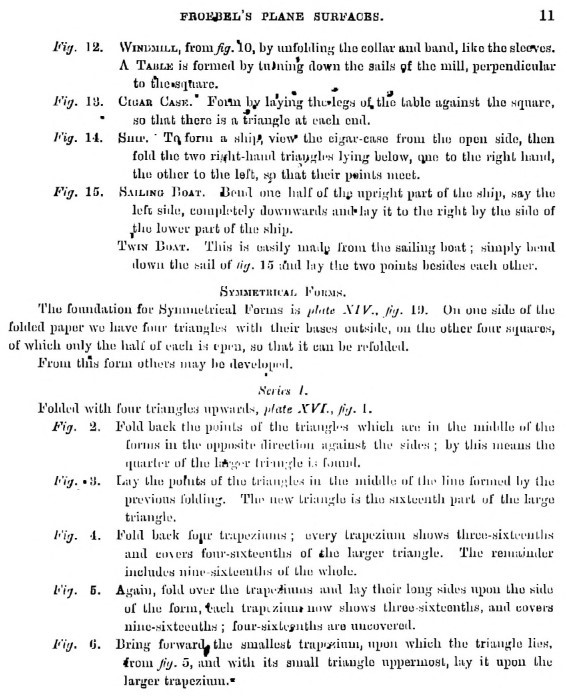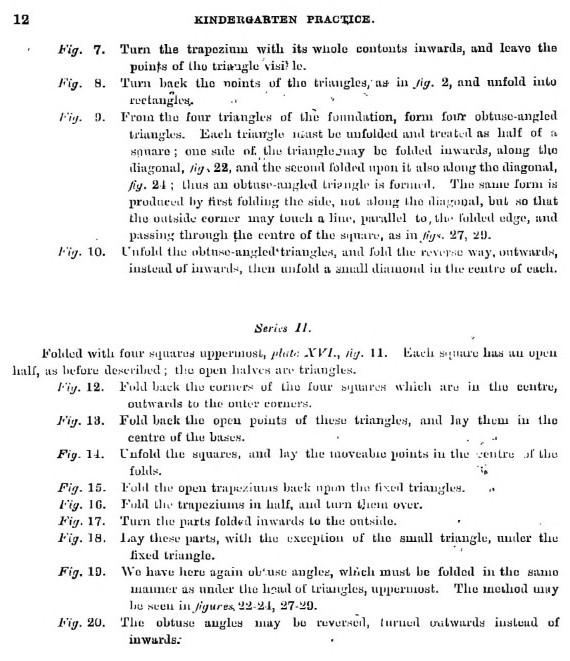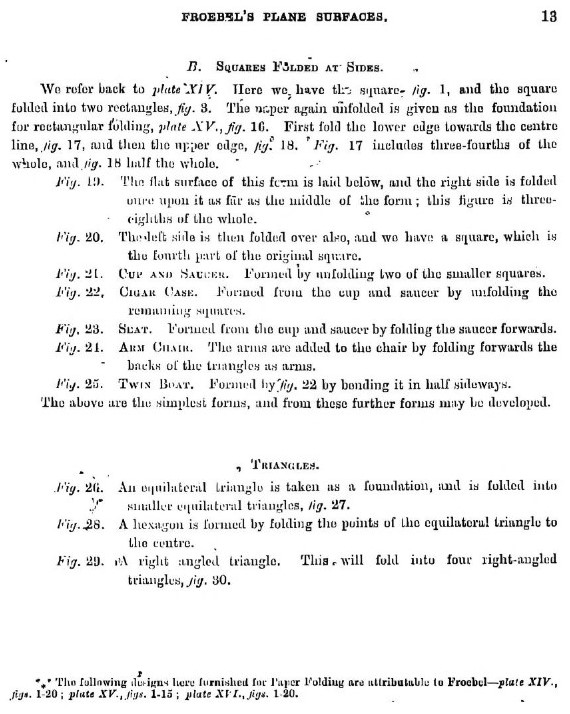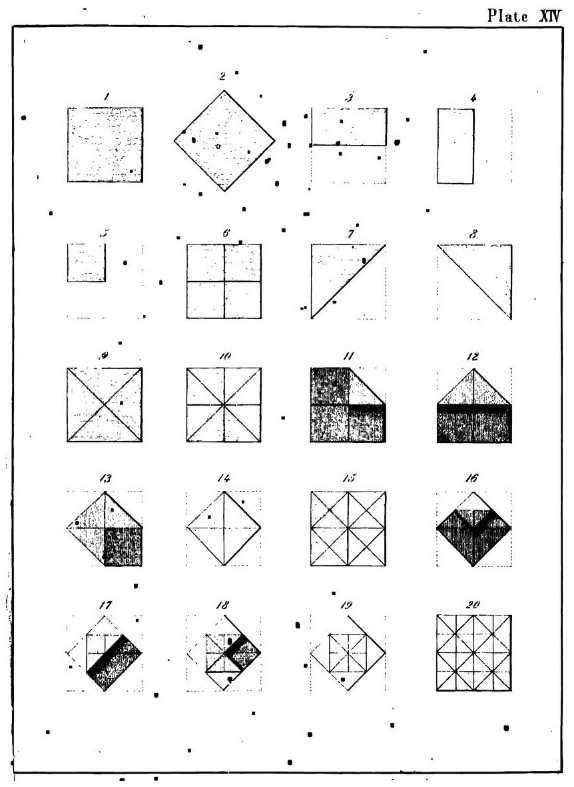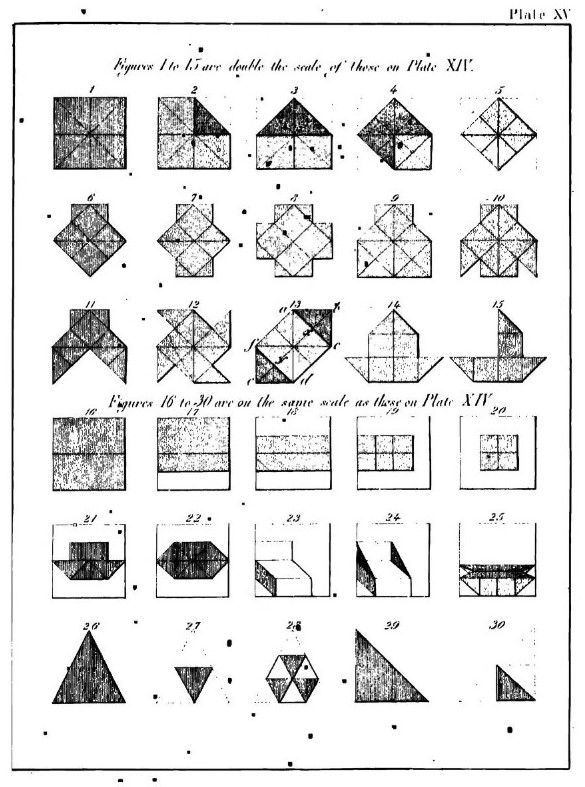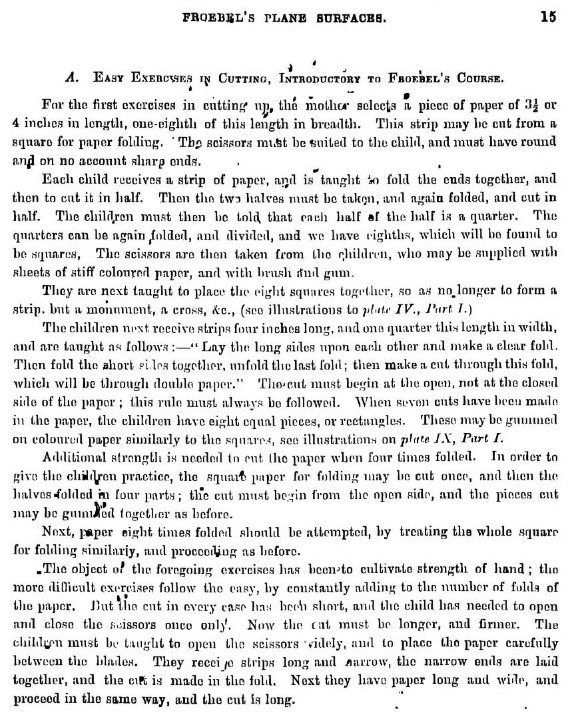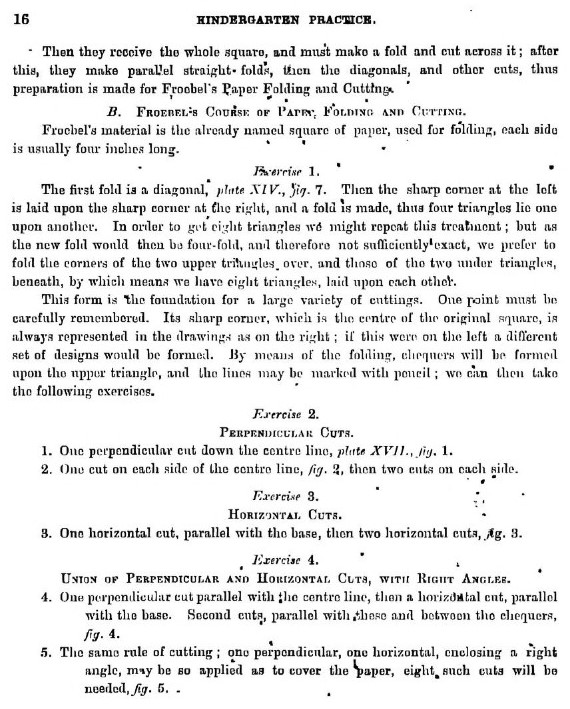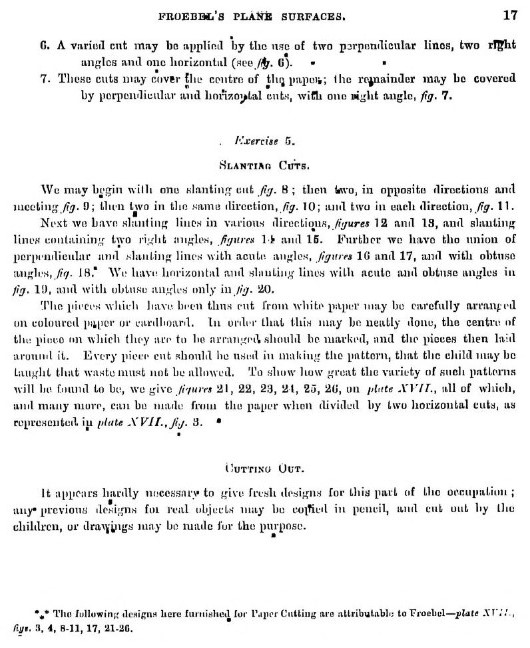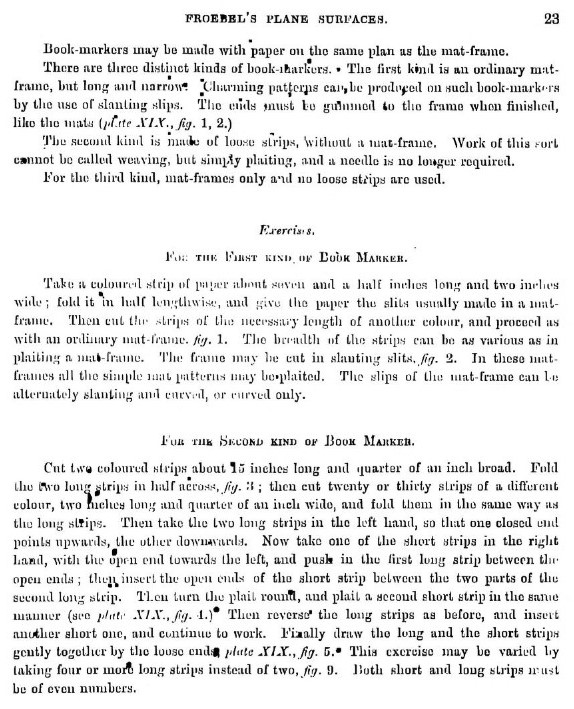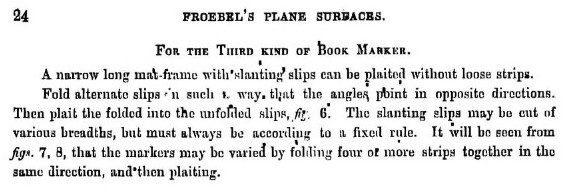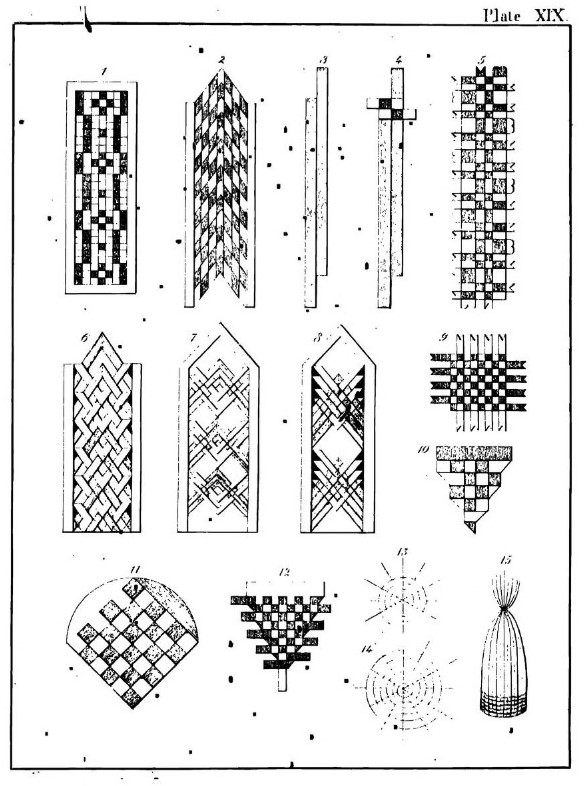| The Public Paperfolding History Project
Last updated 29/10/2025 x |
|||||||
| Kindergarten Practice: Part II Froebel's Plane Surfaces by Mary Gurney, 1877 | |||||||
| 'Kindergarten
Practice' by Mary Gurney is a substantially abridged
translation, in two parts, of 'Die Praxis Des Kindergartens' by August Koehler. The
second part, 'Froebel's Plane Surfaces', contains
sections dealing with paper folding, cutting and weaving. The date of the first edition is not known. According to here the second edition was published in 1877 in London by A N Myers and Co. It is possible that the first was published earlier in the same year. The information on this page is drawn from the undated third edition which can be accessed online here. As far as I know the content of the three editions was, as you would expect in the case of a translation, identical. The source pages dealing with paper folding, paper cutting and the weaving of bookmarks are reproduced in full at the foot of this page. **********
*********
********** Analysis Paper Folding In her introductory remarks the author claims:
By folding the corners she means folding the corners into the centre ie blintzing. By folding the edges she means folding the edges into the centre ie book folding. I cannot find any examples of designs folded from rectangles, hexagons or octagons in the book. The author also summarises her understanding of Froebel's contribution to the development of paperfolding:
********** One other thing of particular interest is a note at the foot of page 13 which attributes certain of the folding sequences and designs to Froebel himself.
********** The author also gives a method of cutting squares from a rectangle: How to Obtain Squares from Rectangles
********** The designs illustrated in the book are: First series: (produced from the Triple Blintz Basic Form: A Jar / The Scent Bottle
********** A Jacket with Short Sleeves / The Muff
********** A Greek Cross / The Cross
********** Inkstand / The Inkwell
********** Jacket with Sleeves / The Jacket
********** Children's Trousers / The Trousers
********** The Windmill
********** The Table No illustration ********** The Cigar Case
********** Ship / The Ship
********** Sailing Boat / The Boat with Sail
********** Twin Boat / The Double Boat No Illustration ********** Second series: (produced by folding the edges into the centre in both directions The way in which these figures are obtained, and consequently their structure, is not always clear from the wording. The Double Bookfold Basic Form
The illustrations only make sense if the paper is turned over between pictures 18 and 19. Perhaps this is what 'The flat surface of the form is laid below' is intended to mean. ********** The Cup and Saucer
********** The Cigar Case (Version 2)
********** Seat / The Bench
********** Armchair / The Bench with Arms
********** Twin Boat / Another Double Boat Folding the version of the Cigar Case shown in fig 22 in half will not result in the standard Double Boat but in the version I call Another Double boat.
********** Folding a regular hexagon from the equilateral triangle: I cannot find this folding sequence in Koehler's original book. (A method of creating an equilateral triangle to start with is not given, although such a method can be found in Koehler's original book.)
********** Symmetrical Forms: The first eighteen patterns are developed from the doubly blintzed square (blintzed, turned over and blintzed again), patterns 2 to 10 from one side and patterns 12 to 20 from the other. The author attributes these patterns to Froebel himself (see above). The remaining six folds are developed in two ways, the first three by folding edges onto a diagonal crease and the final three by folding corners onto a horizontal bisector. I cannot find any reference to these six figures anywhere else in the book.
********** Paper Cutting In the text the author says that Froebel made a distinction between 'cutting out' and 'cutting up' ie dividing into parts. The author first gives a series of simple fold and cut exercises designed to accustom children to making cuts and strengthening their fingers. She then gives examples of patterns that can be cut from a square folded into an eight layer right angle isosceles triangle, a method that is attributed to Froebel. A note at the foot of page 17 also attributes certain of the designs to Frobel himself.
**********
********** Paper Weaving The chapter on paper weaving contains several designs for bookmarks made by the Fold and Cut Chevron method.
**********
********** |
|||||||















